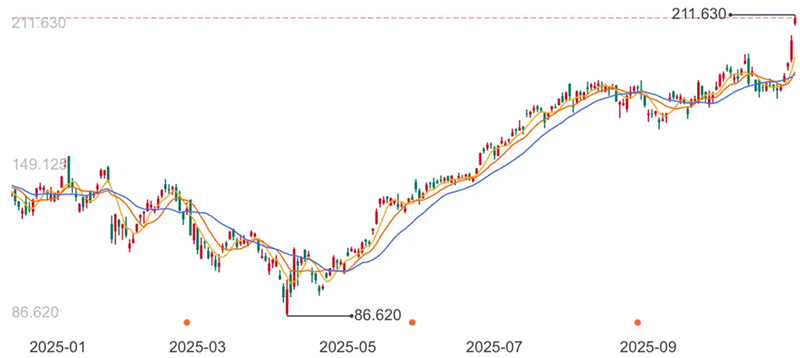In 2025, Nvidia set a new record in global business history—becoming the first company to surpass a market capitalization of $5 trillion. This milestone not only signifies the capital market’s high recognition of the artificial intelligence industry but also foreshadows a profound transformation in the global technology landscape.
Looking back at Nvidia’s development, its rise is a model of industry transformation and upgrading. Founded in 1993, the company was initially known for its gaming graphics cards, but its forward-looking foray into general-purpose GPU computing, with its CUDA parallel computing architecture, laid the groundwork for later industry changes. With breakthroughs in deep learning algorithms, Nvidia’s GPUs, thanks to their superior performance in parallel computing, quickly became the core computing power support for digital transformation across various industries, achieving a strategic transformation from a professional graphics processing provider to a general-purpose computing solutions provider.
In terms of capital market performance, Nvidia jumped from a $4 trillion market capitalization to $5 trillion in just three months, a growth rate unprecedented among companies of similar size. Behind this astonishing performance is the explosive growth in computing power demand driven by the accelerated global digital transformation. Especially after its latest breakthroughs in generative AI technology, Nvidia’s high-performance computing products have remained in short supply, becoming a strategic resource fiercely contested by everyone from internet giants to traditional manufacturers.
Nvidia’s market performance is reshaping the competitive landscape of the technology industry. Currently, while Microsoft and Apple’s market capitalization have also surpassed $4 trillion, their growth momentum significantly lags behind Nvidia. This shift profoundly reflects the capital market’s reassessment of the value of computing infrastructure and signifies a shift in the focus of competition in the technology industry from end-user applications to underlying infrastructure.

It is noteworthy that Nvidia’s success stems not only from its hardware advantages but also from its full-stack industry layout. From GPU hardware to the CUDA software ecosystem, from AI training platforms to industry solutions, Nvidia has built a complete industrial ecosystem. Its latest computing architecture has already secured huge orders from tech giants including Amazon, Google, and Microsoft, and is expected to bring new growth drivers in the second half of this year.
Nvidia’s rapid development has also spurred the vigorous development of related global industrial chains. Chip manufacturing partners are operating at full capacity with advanced process technologies, storage manufacturers are experiencing shortages of high-bandwidth memory products, and global data center construction is entering a new boom. This series of chain reactions fully demonstrates the strong driving force of leading companies on the industry chain.
Despite its remarkable achievements, Nvidia still faces many challenges. Changes in international trade policies may affect its global market layout, competitors are accelerating their technological catch-up, and major customers are investing heavily in the development of their own chips. However, as the global digitalization process deepens, the application scenarios for high-performance computing continue to expand, from smart manufacturing to smart healthcare, from new energy to autonomous driving.
Industry observers point out that whether Nvidia can maintain its leading edge depends on its ability to continuously innovate in industrial ecosystem construction and industry solutions. This technology company, which has grown from a startup to a $5 trillion market capitalization giant in thirty years, not only reflects the changes in the global technology industry but also provides important insights for the digital transformation of various industries. In the digital economy era, computing infrastructure is becoming a new engine for industrial upgrading and economic development, a trend that is reshaping the global industrial competitive landscape.












